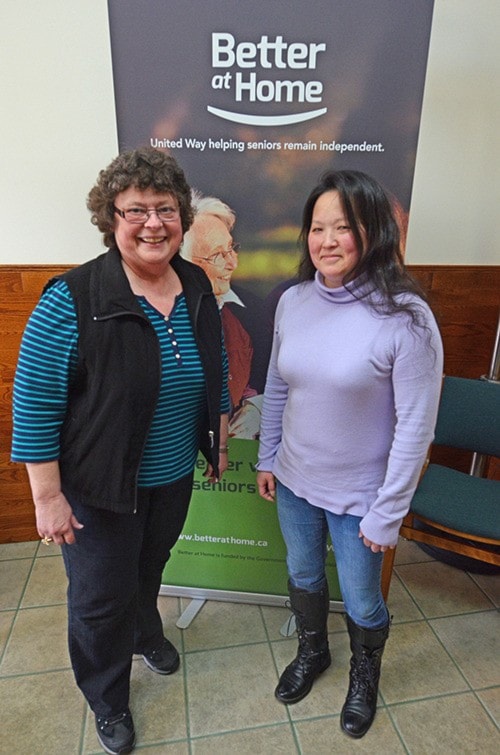Better at Home is a community initiative that helps seniors with a myriad of household and personal tasks, allowing them to live independently in their homes, while remaining connected to the greater community.
The invaluable service modeled after United Way’s Better at Home urban project, is allowing rural seniors to enjoy a higher quality and standard of living that is essential for the day-to-day care of the aging demographic in Hope.
Heading up the operation in Hope is staunch seniors' activist and champion Cindy Izawa program coordinator for the Hope/Fraser Canyon Better at Home location. She has dedicated the last year and half to seeing this project come to fruition.
“It allows seniors to have a sense of pride in their homes and to enjoy a better quality of living,” Izawa told The Hope Standard.
The program allows communities to self-manage and delegate task specific assignments for contractors and volunteers to help vulnerable, or unattached seniors (seniors without family, or spouses) to have access to a variety of services including friendly visiting, snow shoveling, transportation to appointments, simple home repairs, grocery shopping, light housekeeping and non-medical requirements specific to the client.
Hope was identified as a local seniors’ champion with supports firmly in place and an asset-based capacity to manage the specifications of the Better at Home program.
By focusing on the positives of the program and the ability to build on its foundation at the local community level, it was determined that there were a number of steps necessary to enhance upon to facilitate the careful management and well-being of seniors.
Once these steps were determined and sufficiently acted upon, it was established that there was a golden opportunity for the aging populace to stay longer in their own homes, while enjoying a heightened level of independence.
After an extensive research period involving both senior citizens and stakeholder interviews with service providers commenced, it was determined at a community meeting on June 10th, 2013 that the Better at Home Program would take root in several rural communities.
Of the communities chosen, Better at Home found it’s way to the District of Hope, Sunshine Valley, Yale, Spuzzum, Boston Bar / North Bend and 8 First Nations.
“I have osteoporosis and back issues, so it’s nice to have a volunteer gardner come in and cut the grass,” said Joan Hay, a Better at Home client.
Of an area that spans 100 km, starting at Sunshine Vally in the east to Boston Bar/North Bed, seniors make up a demographic of more than 25 per cent of the population, and Hope is at the forefront with a population totaling 85 per cent of that number.
“Hope was a prime candidate due to its reputation as a have it all rural community with several grocery stores, three pharmacies, retail outlets and restaurants,” said Izawa.
The Fraser Valley Regional District determined in a report in 2012 that a significant number of seniors aged 65 to 84, reside in Hope in single-detached dwellings — a need for additional home care supports was found that demanded attention.
The ability for seniors to participate in social and meaningful activities, especially in rural communities are linked to transportation, which seniors often don’t have access to. Better at Home sought to fill that void and by doing so, create the opportunity for seniors to get out and about and participate leading to fuller and richer lives. The Better at Home is facilitated out of and collaborates with the Care Transit Society in Hope, which is headed by seniors mogul Shari Carrat.
I would encourage others to make use of the service — I registered immediately and I am so grateful, I don’t know what I would do without them — I recommend it for anyone who is alone and needs help,” Hay told The Hope Standard.
